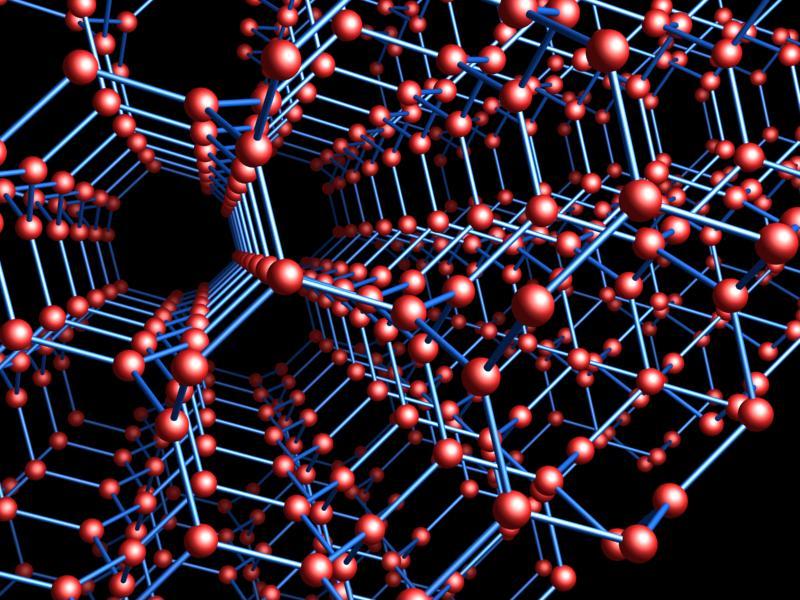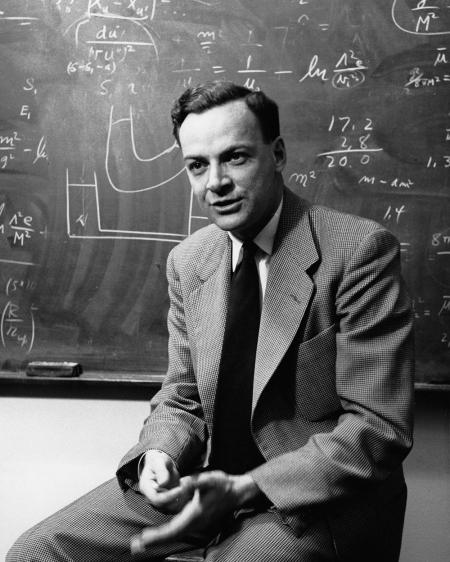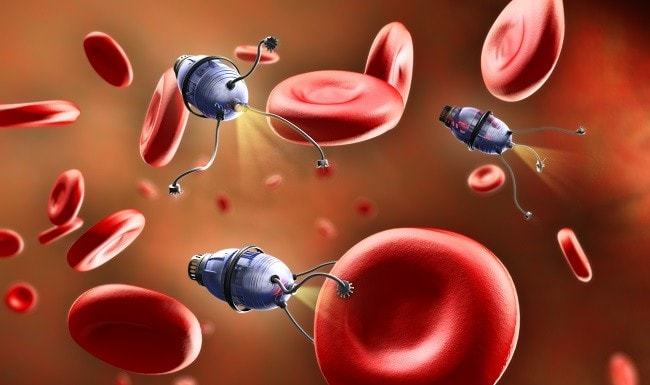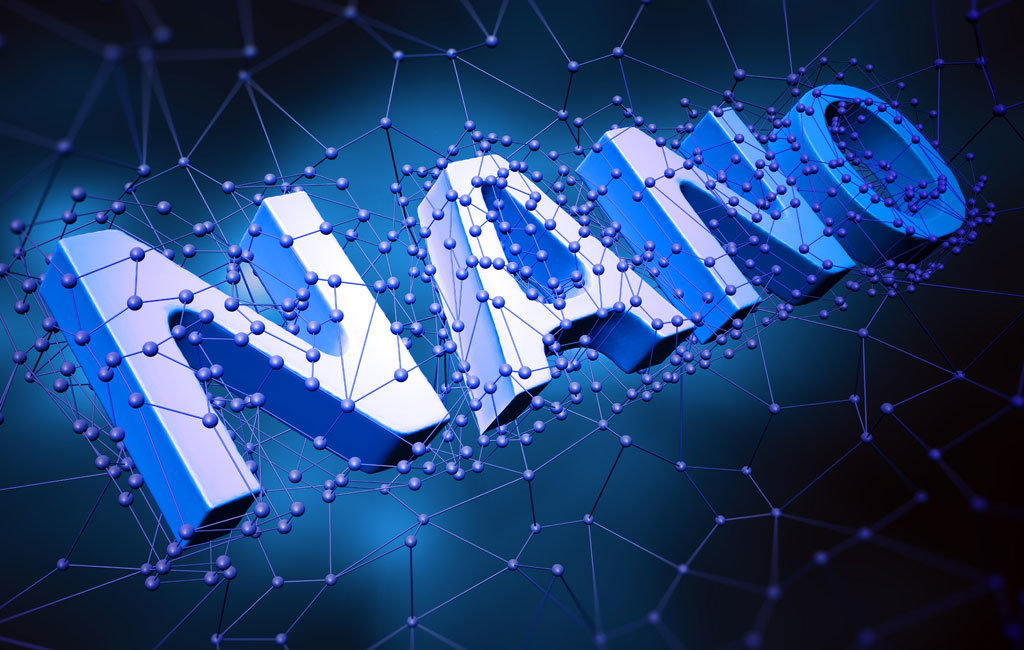Introduction to Nanotechnology
What is Nanotechnology?

The word nanotechnology is a fusion of two words – ‘nano’ and ‘technology’. The term “nano” is abstracted from the Greek word “nanos,” which means “dwarf.” The term ‘nano’ refers to one billionth of unity in a measuring system, i.e 10−9 . According to J. Ramsden (2016), the simplest definition of nanotechnology is “technology at the nanoscale”. N.K. Tolochko (2009) explores how ambiguity surrounds a universally accepted general definition of the term ‘nanotechnology’. In simpler words, nanotechnonlogy is a branch of science and technology that deals with manipulation of matter particles ( atoms and molecules) at the nano level ( 1 to 100 nanometers) to manufacture electronic and technical devices. The constituent parts of these devices are essentially of nano order.
Nanotechnology can also be comprehended as a technology that focuses to not only control materials at nano-level, but also to influence and operate them, so that they can be designed to be used for specific purposes.
P. Armstrong (2017) highlights that various distinct and diverse fields of technology like Aerospace, Food Industry, Fabric Industry, Consumer Electronics and Medicine collectively embody NANOTECHNOLOGY. All these fields of technology strive to alter and enhance properties of matter by control at atomic level.
J. Ramsden (2016) highlights two most desirable aspects of nanotechnology which enables it to be a field of research, innovation and invention across number of typically diverse fields of technology:
- As nanotechnology involves manipulation and alteration of material properties at atomic level, it renders the possibility of manufacturing devices with novel and unique combinations of properties. Inherent material properties like strength, weight, speed and electrical conductivity can be changed as desired by breaking down and recombining elements at the molecular scale.
- Nanoscale devices require less material to make them. They consume less energy and their properties and accessibility exponentially increases by reducing their characteristic dimensions.
The above highlighted points outline the significance of nanotechnology. To summarise, it facilitates production of devices of smaller dimensions with advanced desirable properties, at low production cost. This is precisely what makes it a popular research field in the current era.
History of Nanotechnology
Nanotechnology in Nature
There are myriad examples of nano-scale materials occurring in nature before man even started to think along these lines ( Allhoff, Lin and Moore, 2010) . For instance, some bacteria have nano-magnetic particles in their bodies, which function as a compass and provide sense of direction to the bacteria. Allhoff et. al (2010) draw a compelling corollary between nanotechnology in nature and modern nanotechnology in their book ‘‘What is Nanotechnology and why does it matter?’. {Ebook available at:
https://ebookcentral-proquest-com.ezproxy-f.deakin.edu.au/lib/deakin/reader.action?docID=470149&ppg=31 }
History of Modern Nanotechnology
1959

Modern day nano-technology is traced back to a speech delivered by American physicist Richard Feyman (considered to be ‘Father of Nanotechnology’) at an American Physical Society meeting at the California Institute of Technology in 1959 (M. Sharon, 2019). Entitled “There is Plenty of Room at the Bottom”, Feyman explored how ‘the principles of miniaturization and achieving precision at atomic-level ‘ do not violate any known law of physics (Allhoff et. al, 2010). Without using the term ‘nano-technology ‘he discussed natural systems that achieve atomic-level precision unaided by human design. Feyman’s interest laid in microscopes and he emphasised how development of powerful electron microscopes (microscopes that employ electron beams in place of light to give extremely high resolutions) would be the key to development in this field (Allhoff et. al, 2010).
1974
The term ‘nanotechnology’ was first used by Norio Taniguchi in a paper entitled “On the Basic Concept of ‘Nano-Technology’” in 1974 in which he defined it as a technology that ‘engineers materials at nano-level‘. (Taniguchi, , Arakawa and Kobayashi, 1974).
1986

Eric Drexler, an American engineer authored the most important book about nanotechnology, “Engines of Creation: The Coming Era of Nanotechnology”, which was published in 1986. Aimed at a non-technical audience, he introduced the concept of manufacturing and production at molecular level (N.K. Tolochko 2009).
Research and development in the field of nanotechnology was intensified with inventions of powerful microscopes which eliminated a number of limitations
(N.K. Tolochko 2009) . The scanning tunnelling microscope (an instrument that images surfaces at atomic level) was developed in 1981 by Gerd Binnig and Heinrich Rohrer. In 1986 the atomic force microscope (AFM) was invented which used contact to create an image. These inventions can achieve resolutions at the nano-level and were revolutionary to further development in the field of nanotechnology (M. Sharon, 2019).
The Current State of Nanotechnology
Allhoff et. al (2010) bring to light an interesting fact about nanotechnology. This field can be viewed as the an intersection of other fundamental fields of science.
“It requires extensive knowledge of chemical interactions to manipulate matter at the molecular scale, chemistry is very important to nanotechnology. Because, on the nano-scale, the laws of nature merge the laws of the very small (quantum mechanics) and the laws of the large (classical physics), physics is very important to understanding nanotechnology. Because the material is vital to the function of device and structure, the science and engineering of materials are vital to developing nanotechnology. “
Impact of Nanotechnology
Nanotechnology is a recently developed field, and though various technological fields (mentioned earlier) have succeeded in creating revolutionary products through principles of nanotechnology, it is still a technology in infancy stage ( P. Armstrong, 2017). It is an emerging technology expected to already have and further revolutionise the medical and diagnostics field in particular. M. Sharon (2019) explores the long list of medical applications rendered possible by nano technology some of which are outlined as:
- Early detection of cancer through inexpensive and portable nano-biosensors (sensors that detect activity of biological and chemical materials).
- Bio-imaging (a process of monitoring and visualising biological processes) using nano materials like nano-phospors.
- Targeted drug delivery
- High-density DNA bio-chips to detect genes.

It would be wrong to limit the applications of nanotechnology to the medical field as it has influenced almost all fields of science.
- Electronic: Expensive, bulky equipment is being replaced by cheap, lightweight and more durable devices.
- Energy: Considerable research is focused towards manufacturing efficient solar cells from nano materials.
- Automobiles: Nano-sensors can enable automobiles to assess the status of emissions and control pollutants and self-repair any damage.
The potential and scope of nanotechnology is precisely and beautifully summed up by Nobel laureate Richard Smalley in the quote,
“Just wait— the next century is going to be incredible. We are about to be able to build things that work on the smallest possible length scales, atom by atom. These little nanothings will revolutionize our industries and our lives.”
References
- Allhoff, F, Lin, P, & Moore, D 2009, What Is Nanotechnology and Why Does It Matter? : From Science to Ethics, John Wiley & Sons, Incorporated, Hoboken. Available from: ProQuest Ebook Central. [26 April 2019].
- Armstrong, P 2017, Disruptive Technologies : Understand, Evaluate, Respond, Kogan Page, Limited, London. Available from: ProQuest Ebook Central. [23 April 2019].
- History of Nanotechnology : From Pre-Historic to the 21st Century, edited by Madhuri Sharon, John Wiley & Sons, Incorporated, 2019. ProQuest Ebook Central, <http://ebookcentral.proquest.com/lib/deakin/detail.actiondocID=5726214>
Created from deakin on 2019-04-23 19:34:48. - Ramsden, J. (2016) Nanotechnology : an introduction. Elsevier/William Andrew (Micro & nano technologies series). Available at: <http://search.ebscohost.com/login.aspx?direct=true&db=cat00097a&AN=deakin.b3771599&authtype=sso&custid=deakin&site=eds-live&scope=site> (Accessed: 24 April 2019)
- Sahoo, S.K., Parveen, S. and Panda, J.J., 2007. The present and future of nanotechnology in human health care. Nanomedicine: Nanotechnology, Biology and Medicine, 3(1), pp.20-31.
- Taniguchi, N., ARAKAWA, C. and KOBAYASHI, T., 1974. On the basic concept of’nano-technology’. In Proceedings of the International Conference on Production Engineering, 1974-8(Vol. 2, pp. 18-23)
- Tolochko, N.K., 2009. History of nanotechnology. Encyclopedia of Life Support Systems (EOLSS).
Images and Video
- Eric Dxeler (In History of Modern Nanotechnology:1986), retrieved 25 April,2019 , < https://www.fhi.ox.ac.uk/team/eric-drexler/ >
- Nanorobots (In Impact of Technology), retrieved 25 April, 2019 , <http://triotree.com/blog/nanorobots-introduction-and-its-medical-applications/>
- Nanotechnology, Header Image, retrieved 23 April,2019, <https://www.nasiol.com/nanoblog/how-to-reach-integrity-with-nanotechnology/>
- Plenty of Room at the Bottom, Richard Feyman,Video, <https://www.youtube.com/watch?v=_1Tq57MLHhc >
- Richard Feyman (1918-1988) (In History of Modern Nanotechnology: 1959), retrieved 25 April 2019, <https://www.rolemodelchangemakers.com/home/2018/3/15/the-life-and-achievements-of-richard-feynman>
- Wikipedia, K4 crystal (In Introduction: What is Nanotechnology?), retrieved 25 April 2019, <https://en.wikipedia.org/wiki/Allotropes_of_carbon . >

